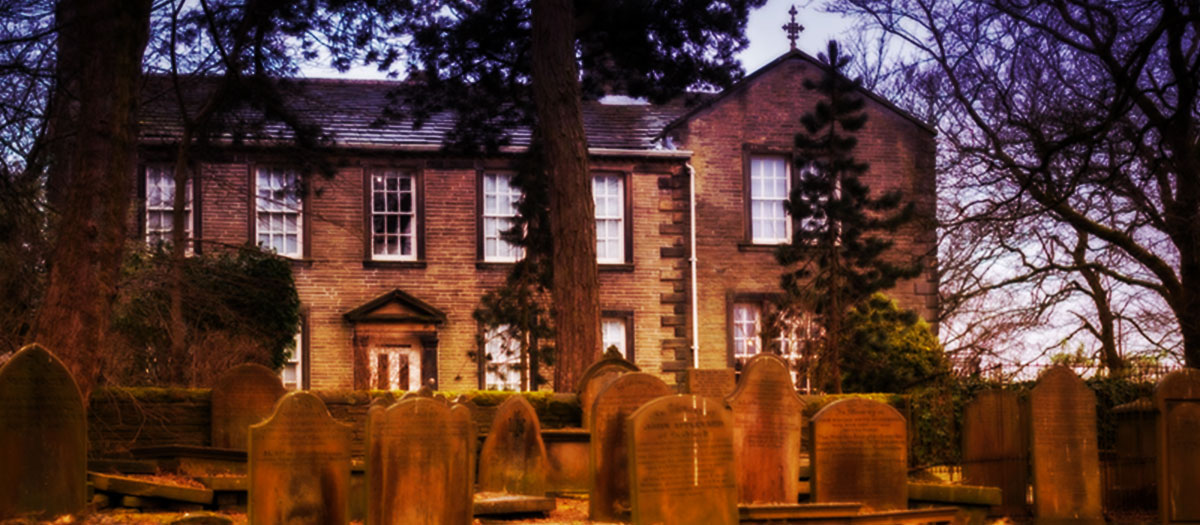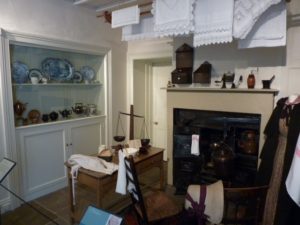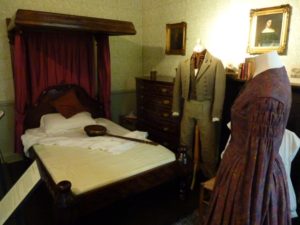11 Jun The Brontë Parsonage
“Life appears to me too short to be spent in nursing animosity, or registering wrongs.” – Charlotte Brontë
The day Judy and I visited the Brontë Parsonage could have come from the pages of Wuthering Heights. The wind was howling. Rain was beating against the windows. Thunder was rumbling across the moors not far away. Regardless, we pressed on with our literary tour of England!
The Brontës at the Parsonage
The Parsonage is located in the small Yorkshire town of Haworth. Charlotte, Emily and Anne Brontë moved there in 1820 as small children together with their parents, Patrick and Maria, brother Branwell and two older sisters (Maria and Elizabeth). Patrick had been appointed incumbent of the town’s Church of St Michael and All Angels. Sadly, within five years Mrs Brontë and both older sisters had died.
Mr Brontë and his surviving children continued living at the Parsonage, which Charlotte described as “humble and unattractive”. It was here that the three sisters wrote some of the most extraordinary and best-loved works of English literature: Jane Eyre (Charlotte, 1847), Wuthering Heights (Emily, 1847), The Tenant of Wildfell Hall (Anne, 1848). All three were also gifted poets, a fact that’s easily overlooked on account of the enduring popularity of their novels. The BBC movie To Walk Invisible (2016) – much of it filmed in and around Haworth – brilliantly depicts how Charlotte, Emily and Anne were inspired to write while overcoming many hardships (and dealing with Branwell’s errant behaviour).
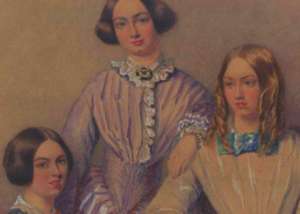

It’s extraordinary that these three young women would make an indelible mark on English literature when you consider the brevity of their lives. Both Emily and Anne suffered from chronic ill health. Emily died at the Parsonage in 1848 at the age of 30. Anne died in the seaside town of Scarborough, where she had gone in the hope of obtaining relief, in 1849 at the age of 29. Charlotte continued to live at the Parsonage until her death in 1855 at the age of 38 from complications in pregnancy (in the first year of her marriage).
Visiting the Museum
The Parsonage has been preserved as the Brontë Parsonage Museum, truly a jewel of English literary history. Everything in the house is authentic (except for the clothes, which are faithful reproductions). We paid for a “VIP Tour” and it proved to be well worth it. Our guide was very knowledgeable and able to answer our searching questions. A VIP bonus was to be allowed into the research library to view its impressive collection of manuscripts, books and memorabilia.
Our tour of the Parsonage took us first to Mr Brontë’s Study. It was in this room that he learned that Charlotte was a successful author. After she had presented him with a printed copy of Jane Eyre, he told the others: “Charlotte has been writing a book – and I think it is a better one than I expected.”

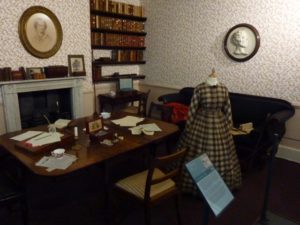
Next we came to the Dining Room. Perhaps the most striking feature of this room is the famous portrait of Charlotte, which hangs above the fireplace. The sisters did most of their writing here and they had the habit of walking around the table every evening discussing their projects. It was an awesome experience to feel the presence of their genius around us.
The Kitchen was significant in two major respects. First, it’s where the young children would gather to listen to their servant Tabby’s dark tales of the Yorkshire moors. Second, after their aunt/caretaker’s death in 1842, Emily took upon herself the role of housekeeper. Baking bread was her specialty.
Upstairs, Charlotte’s Room was the main bedroom, initially used by the parents. Charlotte moved in around 1844 and it was here that she died in 1855. The most striking feature in the room is a large glass-sided case containing the dress worn by Charlotte when she set out on her honeymoon in 1854. The so-called Children’s Room was used by Emily as her bedroom. Mr Brontë’s Bedroom was shared with Branwell so that Mr Brontë could watch over his wayward son. Both Branwell and Mr Brontë died in this room: the son in 1848 at the age of 31 and the father in 1861 at the age of 84.
The Church and Town
In the back garden of the Parsonage there’s an extravagant (and unflattering) statue of the three sisters. A short walk along Church Street brought us to the church itself. The Brontë family vault contains the remains of Mr and Mrs Brontë, Maria, Elizabeth, Branwell, Emily and Charlotte. A modest brass plate set in the floor commemorates Emily and Charlotte.

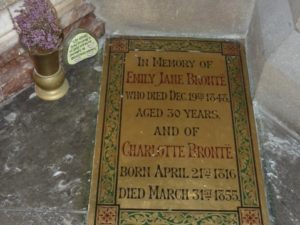
The inclement weather prevented us from taking the seven-mile circular walk across the moors to Top Withens, the site of which is said to have been Emily’s inspiration for Wuthering Heights. However, we were able to take the short walk down Haworth’s steep and cobbled Main Street, with its inevitable tea rooms and souvenir shops, to the Black Bull pub, where the dissolute Branwell was a frequent visitor. A great way to end an unforgettable day!
If you’re thinking of visiting the Brontë Parsonage, allow at least three hours to explore the house and nearby church. Be sure to outfit yourself with comfortable shoes, a light jacket and an enquiring mind. Looking for more to do in the area? Consider the Yorkshire Dales: 841 square miles of stunning landscapes and picturesque villages. To visit the Brontë Parsonage, the Yorkshire Dales and other fascinating literary and non-literary sites associated with your favorite writers, plan your itinerary here.
Reference: Brontë Parsonage Museum (Scala, 2015)




